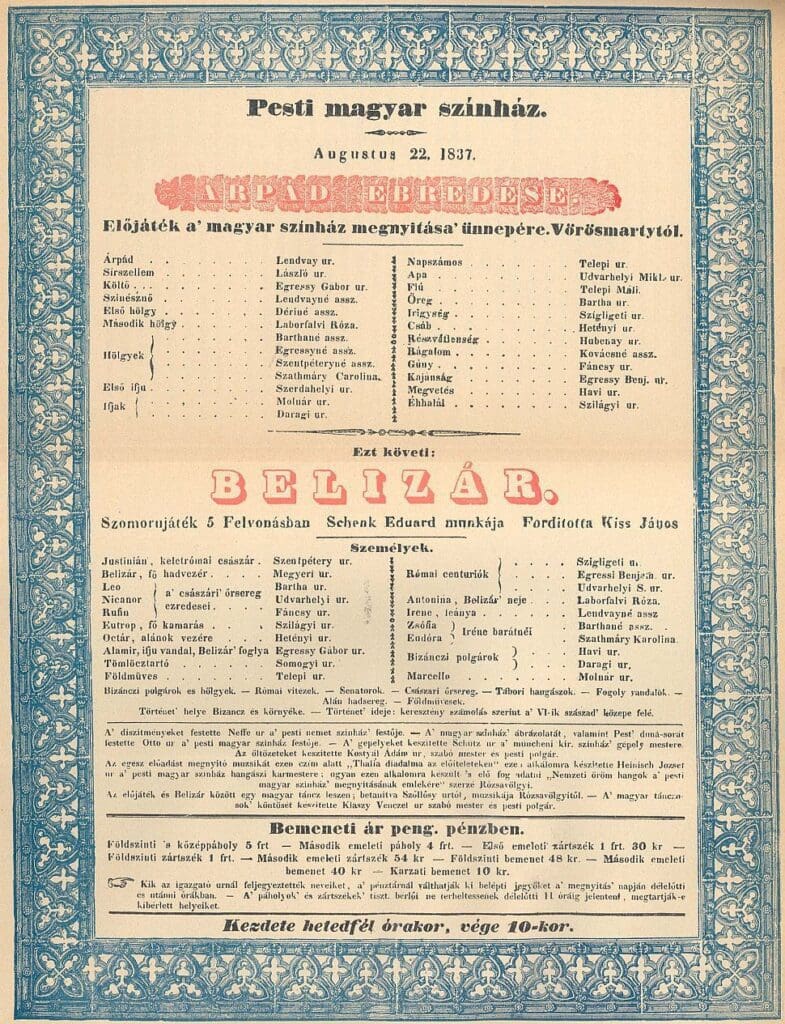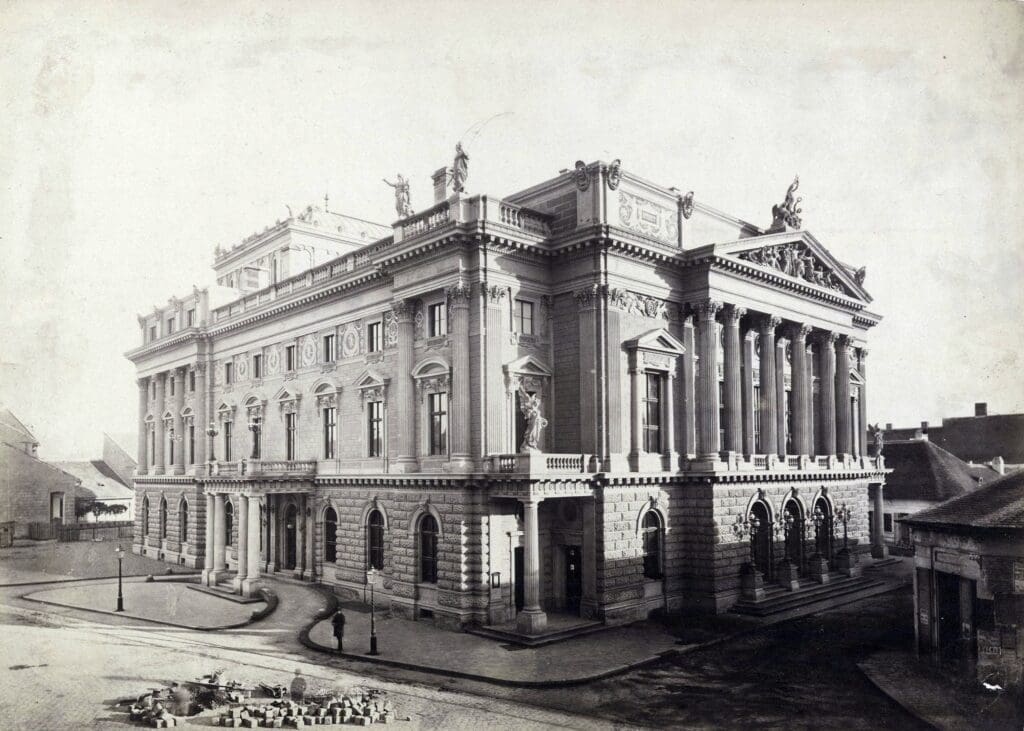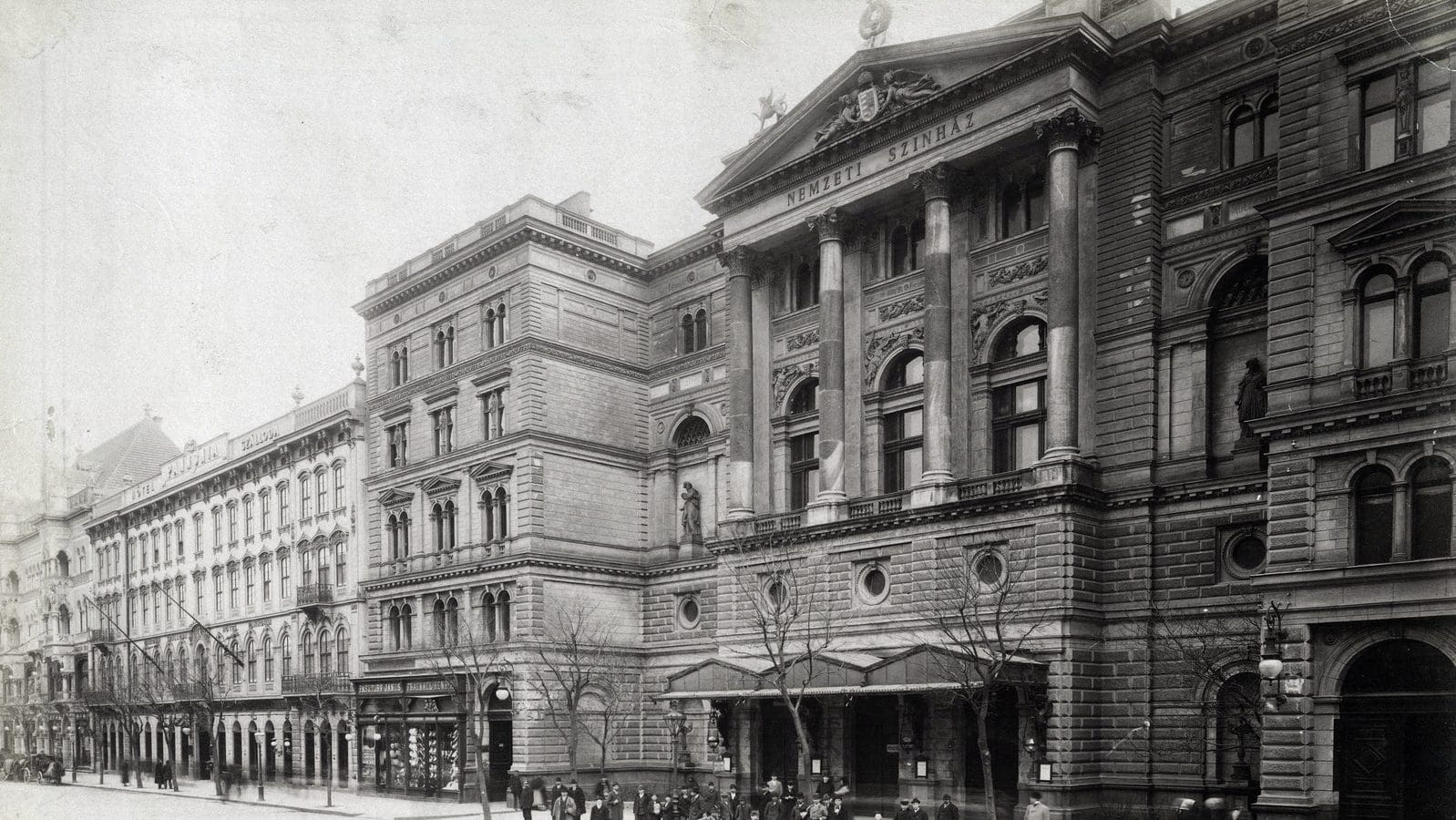In August 1837, Pest’s first permanent, Hungarian-language theatre opened at the Astoria, with the performance of Hungarian poet Mihály Vörösmarty’s drama Árpád ébredése (The Awakening of Árpád)—this was the first period of the Pesti Magyar Theatre, which later became the National Theatre.
In 18th-century Hungary, and later in the Reform Era, theatre and drama gained great importance, since, in addition to their cultural quality, they also became the main platforms of Hungarian literature and language, as well as of certain political aspirations.
The first Hungarian theatre company in the country was established in Kolozsvár (today’s Cluj-Napoca, Romania) in 1792, followed by Miskolc and Balatonfüred. Of course, theatre companies without a permanent building already existed in Buda and Pest (still separate at the time), too, but the actors were mainly recruited from among university students. The first Hungarian-language play performed by professional Hungarian actors in 1790 was staged at the Castle Theatre (Várszínház) in Buda, where German troupes appeared more and more often in addition to the Hungarians, mainly because of the city’s large German population. Meanwhile, the construction of the country’s fourth exclusively Hungarian stone theatre in Pest was completed only in 1837.

In 1832, Count István Széchenyi, ‘the Greatest Hungarian’, expressed his thoughts on the creation of a permanent theatre
in the building of what would later become the Hungarian Academy of Sciences in his pamphlet About the Hungarian Playhouse. There were others as well who shared plans regarding the construction of a theatre, each with a different managing authority and location in mind. Many of the great public figures of the time also supported the idea of a new theatre, including Hungarian playwright József Katona, author of Bánk bán, or poet Ferenc Kölcsey.
Finally, the funding for the construction was secured by Gábor Földváry, the Sub-Lieutenant of Pest County, and the generous public. Works began on the plot donated by Duke Antal Grassalkovich, at the corner of Múzeum Boulevard and today’s Rákóczi Road.
The classicist-style edifice was built by Hungarian architect Mátyás Zitterbath based on the modified designs of actor and playwright György Telepy. The first director of the theatre was poet and critic József Bajza, whose name is borne by the street of his former residence in Budapest.
At the 1840 Diet, it was decided that the institution would be removed from under the authority of the county, and become state-run,
thus its name was changed to National Theatre.
The theatre enjoyed great success from the very beginning in the capital. In addition to plays such as Hamlet, Liliomfi, Bánk bán (Bánk the Palatine), The Barber of Seville, Romeo and Juliet, and The Lady of the Camellias, operas were also performed at the theatre, which was the case until the opening of the Opera House in September 1884.

In the golden age of Hungarian stage acting, celebrated Hungarian actors such as Lujza Blaha, Sári Fedák, Mariska Vízváry, Árpád Ódry, György Kürthy or Ede Újházi all played in the Hungarian National Theatre.
Frigyes Podmaniczky’s years as director (officially, intendent) between 1875 and 1885 were considered the heyday of the theatre, which included, for example, the separation of genres—among other things, the transfer of folk plays to the company of the National Theatre and the moving of opera performances to the newly opened Opera House—, as well as the modernisation of the theatre building. During these years, the edifice was expanded with actors’ apartments, workshops, and a new floor, and the drama school also operated next to it.
The theatre was equipped with electric lighting in 1883, but in the following thirty years, its condition deteriorated so much that it was closed in 1908, and five years later, it was condemned for demolition. It was then that the troupe of the National Theatre had to begin its series of forced relocations…
Related articles:
Click here to read the original article.








